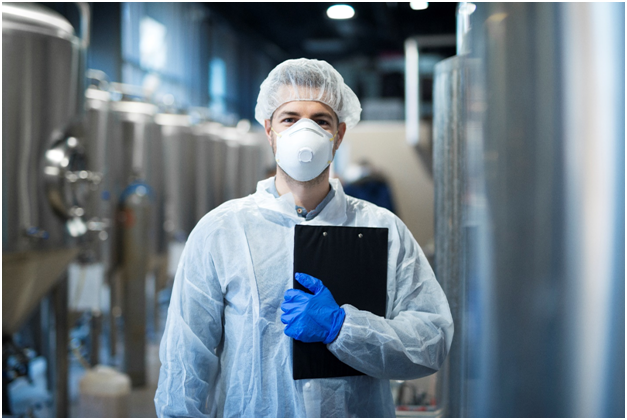PPE is essential to ensure that there isn’t an issue with health and safety, keep hygiene standards high, and ensure that infections do not spread. However, it will only be effective if it is put on and removed the correct way. This article explores the key factors to keep in mind here.
There are numerous different forms of personal protective equipment (PPE). The type worn will depend on the role of the individual, the environment, and the industry. Some of the common types include:
- Eye and face protection
- Respiratory protection
- Hand protection
- Hearing protection
- Foot protection
PPE can be used to protect team members, employees, and even other people that they might come in contact with. For this to occur, you need to make sure that you are following the right procedures in terms of putting on and removing PPE. You can learn about this on a PPE training course, however, below you’ll find some key points to keep in mind.
How To Put On PPE The Right Way
Putting on PPE is also referred to as donning and it’s one of the first things you learn with PPE online training. There are a variety of steps that you must take to ensure that you are putting on PPE correctly. You need to start by thinking about the PPE that needs to be worn for a particular environment.
For instance, if you are dealing with hazardous materials, you need to ensure that you are wearing gloves. The gloves could be made of a variety of materials, again dependent on the environment where they are being used. You might also need food protection if you are operating somewhere like a construction site. Alternatively, if there are hazardous materials in the air, you could require respiratory protection.
Once you are aware of the PPE that you need to wear, you should wash your hands before. Hands should be washed thoroughly, particularly in situations where there is a potential spread of infection. If you are wearing an apron or a full body suit, this should be donned first, fastening it securely.
You can then think about putting on your mask or respirator. Depending on the device, there might be elastic bands that need to be fitted securely. The mask should go over the nose bridge and below the chin. Once you have secured the respirator, you may also need to think about putting on eye protection. This should be placed over the face and eyes, adjusting it to fit.
Gloves are one of the last pieces of PPE to don. These should be selected for your specific hand size. In most cases, they need to be extended so that they cover your wrist completely. If you are using disposable gloves, ensure that they are tight on the hands and that there is no rip.
Removing Personal Protective Equipment
The correct order for removing PPE will be to take off the gloves, apron or gown, eye protectors, and then the mask. You should only remove your PPE when you are no longer in a hazardous environment. If the outside of the gloves are contaminated with dangerous or hazardous materials, you should grasp the out of the glove with the opposite hand and remove it. You should hold the removed glove in the hand that is still gloved.
After this, you can slide the fingers of the ungloved hand under the glove that is still on the wrist. Once you have done this, you can then peel the second glove off by taking it over the first glove. If they are disposable, ensure that you dispose of them safely.
If your apron or protective gown is contaminated remove it carefully by unfastening the ties and straps. You should pull it away from the neck without touching contaminated areas. You should then roll it into a bundle and discard it carefully,
You should remove clothing like this with a peel motion to ensure that you are not touching any contaminated areas.
If you are removing eye protection, you should ensure that you only handle either the sides or the headband. Once removed, you can either place these in a receptacle or you can put them in a waste bin.
The respirator is the last piece of PPE that should be removed. You should not touch the front of the respirator or face mask. Instead, make sure that you unfasten the ties, undoing the bottom and then the top. You can then pull it away from your face.
Once you have removed your PPE, make sure that you are performing hand hygiene immediately. We hope this helps you understand the right way to put on and remove items of PPE.







